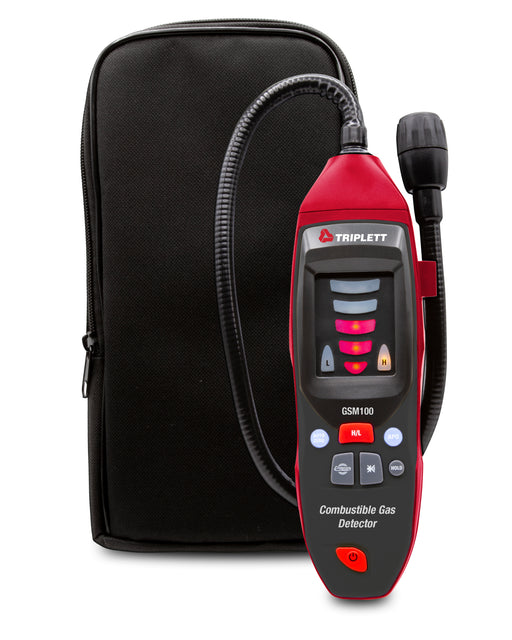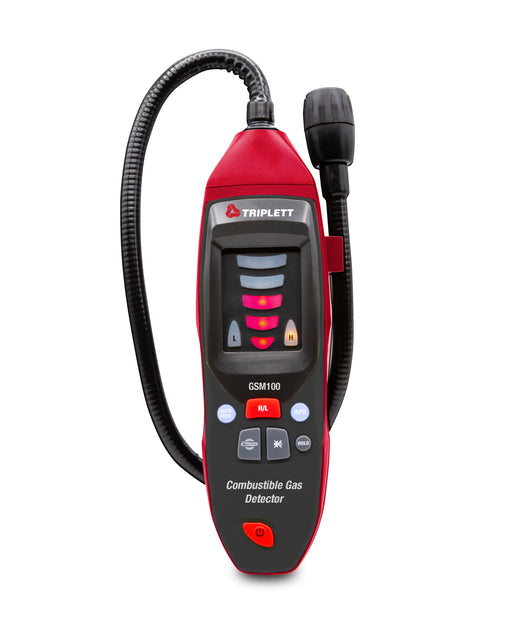Know More About Triplett Air Quality Meters
What are Air Quality Meters?
Air quality monitors serve the purpose of detecting and quantifying different pollutants and contaminants found in the air. This includes substances like particulate matter, carbon monoxide, nitrogen dioxide, ozone, and volatile organic compounds. For indoor settings specifically, air quality monitors are equipped with sensors or detectors that can identify specific types of pollutants and contaminants. These sensors work by measuring the concentration or level of a particular substance in the surrounding air and translating it into an electrical signal. The meter then processes this signal to display an accurate measurement.
Benefits of Using Professional Air Quality Monitors
Indoor air quality monitors are widely chosen for maintaining a safe and healthy environment in a wide range of industries and settings. The following are some of the primary advantages of utilizing air quality meters:
- Health and Safety: Air quality meters enable the easy identification and monitoring of harmful substances, pollutants, and allergens in the air. By measuring parameters such as particulate matter (PM), volatile organic compounds (VOCs), carbon monoxide (CO), and ozone (O3), these meters create a safe and healthy environment for occupants. Regular monitoring can prevent respiratory issues and improve overall well-being.
- Compliance with Regulations: Various industries such as laboratory, manufacturing, construction, and healthcare are obligated to adhere to strict air quality guidelines. The use of air quality meters allows organizations to ensure compliance with regulatory bodies' standards and requirements. Such measures effectively mitigate the risk of penalties, legal issues, and damage to their reputation.
- Productivity and Efficiency: Poor air quality can have a significant impact on the productivity and efficiency of employees in indoor environments. By using professional air quality monitors to regularly assess and control the air quality, organizations can create optimal conditions for work, resulting in improved focus, cognitive performance, and overall productivity.
- Environmental Monitoring: Our range of professional air quality monitors not only helps to analyze the indoor air quality but also enables outdoor air pollution monitoring. This information can be used to assess the effects of industrial activities, traffic, and other external influences on the environment. By understanding these patterns, professionals can assist in building mitigation strategies and promoting sustainable practices.
- Preventive Maintenance: Air quality monitors are valuable tools in proactive maintenance strategies, particularly for HVAC and ventilation systems. By consistently monitoring air quality and detecting any deviations, organizations can proactively address potential issues before they escalate. This approach saves both time and money by preventing expensive repairs, system failures, and operational downtime.
- Data-Driven Decision Making: Indoor air quality meters generate precise and up-to-date data that can be utilized for data analysis and informed decision-making. This information can be used to recognize trends, patterns, and connections with other factors, empowering organizations to make evidence-based decisions regarding environmental improvements and resource allocation, among others.
Understanding Air Quality Parameters
When it comes to assessing air quality, there are several parameters that are commonly measured to get a clear understanding of the environment. Some of the key air quality parameters include:
- Particulate Matter (PM): It refers to the solid and liquid particles suspended in the air. These particles can originate from both natural and human-made sources, such as dust, smoke, and emissions from vehicles and industrial processes.
- Volatile Organic Compounds (VOCs): These are organic compounds with a high vapor pressure at room temperature. High levels of VOCs can lead to poor indoor air quality and have harmful effects on human health.
- Carbon Dioxide (CO2): It is a well-known greenhouse gas that is majorly produced through the combustion of fossil fuels. Monitoring carbon dioxide levels is crucial for assessing the impact of human activities on climate change and identifying areas where emissions can be reduced.
- Carbon Monoxide (CO): Carbon monoxide (CO) is a gas that lacks both color and odor, and it is produced when carbon-containing compounds undergo incomplete combustion. Elevated levels of carbon monoxide can pose a significant risk, as it hinders the delivery of oxygen to the body. Consequently, monitoring carbon monoxide levels plays a crucial role in identifying potential sources of exposure, like faulty appliances or emissions from vehicles.
- Ozone (O3): It is a gas that exists both in the Earth's upper atmosphere and at ground level. While ozone high in the atmosphere acts as a shield, protecting us from harmful ultraviolet radiation, ground-level ozone is a pollutant that can cause respiratory issues and other health problems. Monitoring ozone levels is necessary for understanding the quality of outdoor air and implementing measures to reduce pollution.
- Temperature and Humidity: These are additional air quality parameters that can significantly impact human comfort and health. High temperatures combined with high humidity can lead to heat-related illnesses, while low humidity levels can lead to dryness and irritation. Monitoring temperature and humidity allows for appropriate adjustments to be made to indoor environments to ensure optimal conditions.
Application Areas of Air Quality Meters
Our range of indoor air quality meters are used in a wide range of sectors to monitor and measure the quality of air. A few of them are listed below.
- Indoor Environments: One of the primary application areas of air quality meters is in indoor environments including offices, homes, and schools. By monitoring several parameters, the meters help to identify indoor air pollution sources, assess ventilation systems, and guarantee that the indoor environment is comfortable and safe for occupants.
- Industries: Industries that release pollutants or function in potentially hazardous environments depend on these meters to monitor and control air quality. By monitoring parameters like gases, particulate matter, and volatile organic compounds, these meters enable industries to comply with regulations, prevent worker exposure to harmful substances, and maintain a healthy work environment.
- Outdoor Environments: Air quality meters are used to monitor air pollution levels in urban areas, near major roads, and around industrial facilities. By measuring parameters, the meters help authorities evaluate air quality, detect pollution sources, and develop strategies to improve it.
- Research: They are also used in research studies to gather data on air pollution and its impact on public health and the environment. Moreover, they find applications in specialized areas such as laboratories and cleanrooms.
Tips to Choose the Best Air Quality Monitor
When it comes to choosing the best air quality meter, there are several important factors that should be taken into consideration. A few of them include:
- Measurement Parameters: Various air quality meters are designed to measure different parameters. These can range from particulate matter and volatile organic compounds, to carbon dioxide or air temperature and humidity. Hence, to get accurate measurements, it is highly recommended to identify which parameters are most pertinent to your applications and choose a meter that is capable of measuring those specific parameters.
- Accuracy and Precision: It is important to consider the accuracy and precision of data offered by the meter. Search for meters that have been calibrated and tested or have undergone independent laboratory testing.
- Data Logging and Connectivity: Consider whether you need the meter to have data logging capabilities, enabling you to store and retrieve measurements for further analysis. Also, connectivity features such as Bluetooth or Wi-Fi can make it easier to transfer data to a computer or smartphone for analysis and reporting.
- Ease of Use: When choosing a meter, it is crucial to assess the clarity and intuitiveness of its user interface. Look for displays that are easy to read and navigation menus that are straightforward. Additionally, consider the meter's size and weight, as well as the availability of accessories like carrying cases or mounting options. These factors can greatly impact the usability and convenience of the meter.
- Cost: When selecting an air quality meter, it's crucial to take your budget into consideration. While accuracy and reliability are priorities, finding a meter that strikes the right balance between cost and performance is equally important. Take the time to compare prices and features among different meters to identify the best option that aligns with your budget.
Browse More Network & Cable Testing Collections
Cable Testers:
| Voice, Data, & Video Patch Cables | Cable Length Meters | Tone Generator & Probe Kits |
| LAN or Ethernet Testers | Low Voltage Testers & Accessories |
Telephone Test Sets:
| Telephone Lineman Test Sets | PoE Testers | Power Over Coax |
RF Spectrum Analyzer:
| RF Spectrum Analyzer |
Networking Hand Tools:
| Networking Hand Tools |


